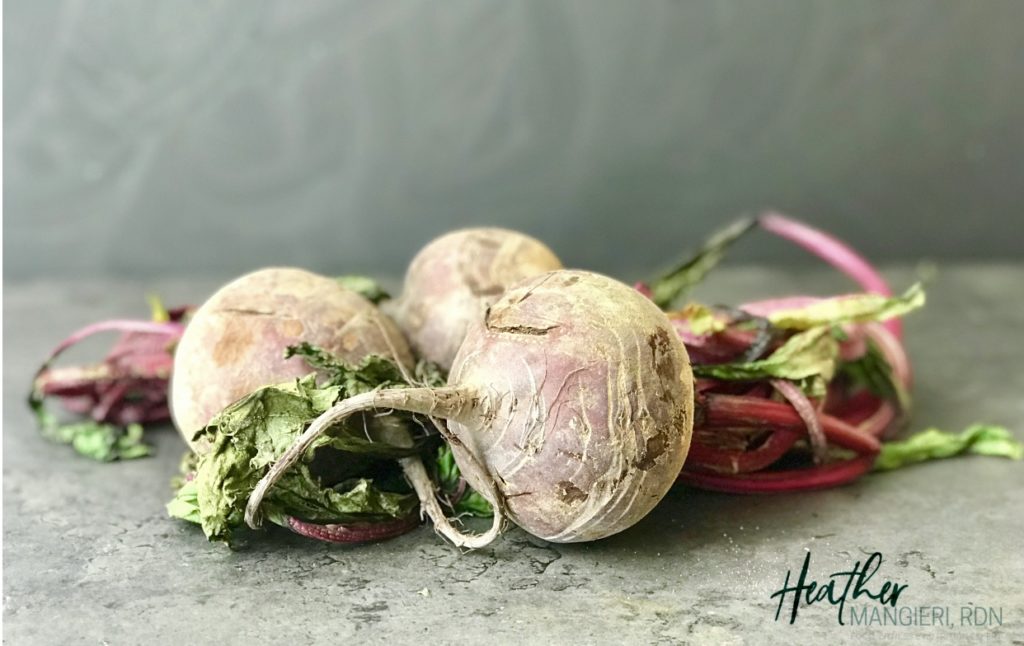
What’s the first thing that comes to your mind when you think of beets? I can remember my mom dumping them out of a can when I was a kid. I wanted nothing to do with them. Maybe you think of the red, slimy, over-processed vegetable you might see at a salad bar. It’s no wonder they have a bad reputation.
Beets have come a long way since I was a kid. Prepared right, they are absolutely delicious, and a highly nutritious additional to your diet.
Before I dive into how to prepare them, I have to share some history, and explain what those benefits are. If you’re anxious to get cooking, you can just scroll down to the last paragraph. I talk about ways to enjoy them in your diet.

The History of Beets
Beets have provided nutritional, medicinal, and household benefits for thousands of years. Native to the Mediterranean, they have been around for centuries. They gained popularity and value in 19th century Europe during the reign of Napoleon, who declared them as the primary source of sugar (a bit of food history for you!) They’ve been used for centuries to dye clothing a deep red color. Today, beet powder and juice are used as one of the main coloring agents in foods such as jams and tomato sauces.
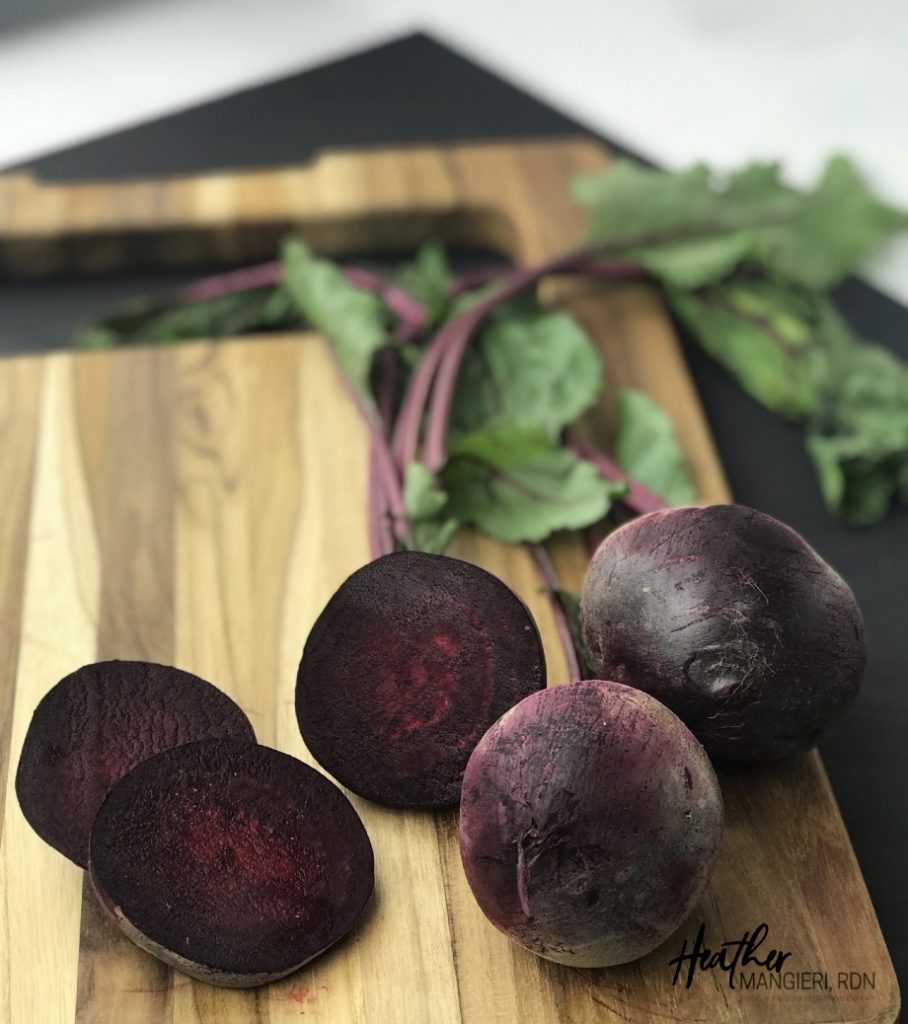
Health Benefits
Aside from their dying properties, beet pigments provide us with many great health benefits. They are often known for being higher in sugar than other vegetables – just ½ cup of beets contains 4.6 grams of sugar, but their higher sugar content should not be a turn-off. They’re loaded with many phytonutrients and nutritional benefits which deserve attention. Specifically, they are rich in vitamin C, folate, dietary fiber and antioxidants.
Aside from the daily nutrition they provide, there’s another reason to eat beets. They’re one of the few plants which contain the phytonutrient pigment betalain. That compound gives them their antioxidant and anti-inflammatory properties, as well as their bright red color. According to a 2006 study comparing the nutrition of canned, processed beets to raw varieties, canned beets lost over 40% of their pigments and health benefits during processing. So, while canned beets are still highly nutritious, I’d like to suggest a few other ways to prepare them that you might actually like.
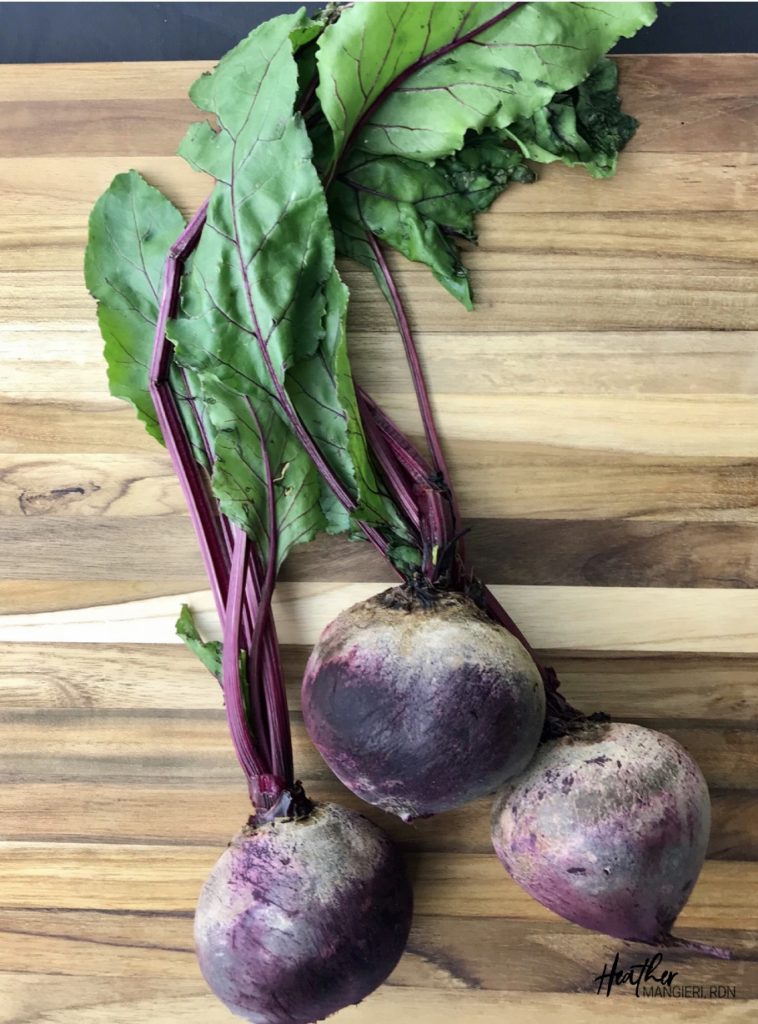
Ways To Eat Beets
Beet juice is one way to incorporate beets into your diet. Beet juice contains high levels of nitrate, which studies show may help lower blood pressure and the risks of cardiovascular disease. And, there is some promising science supporting the role of beetroot juice in athletic performance. One study showed that consumption of the nitrate-rich whole beet improved running performance in healthy adults.
If the idea of beetroot juice turns you off, don’t worry. There are many ways to eat beets! Another way is to steam the beet greens. They have similar taste to the bitterness of Swiss chard, and is a great way to retain nutrients.
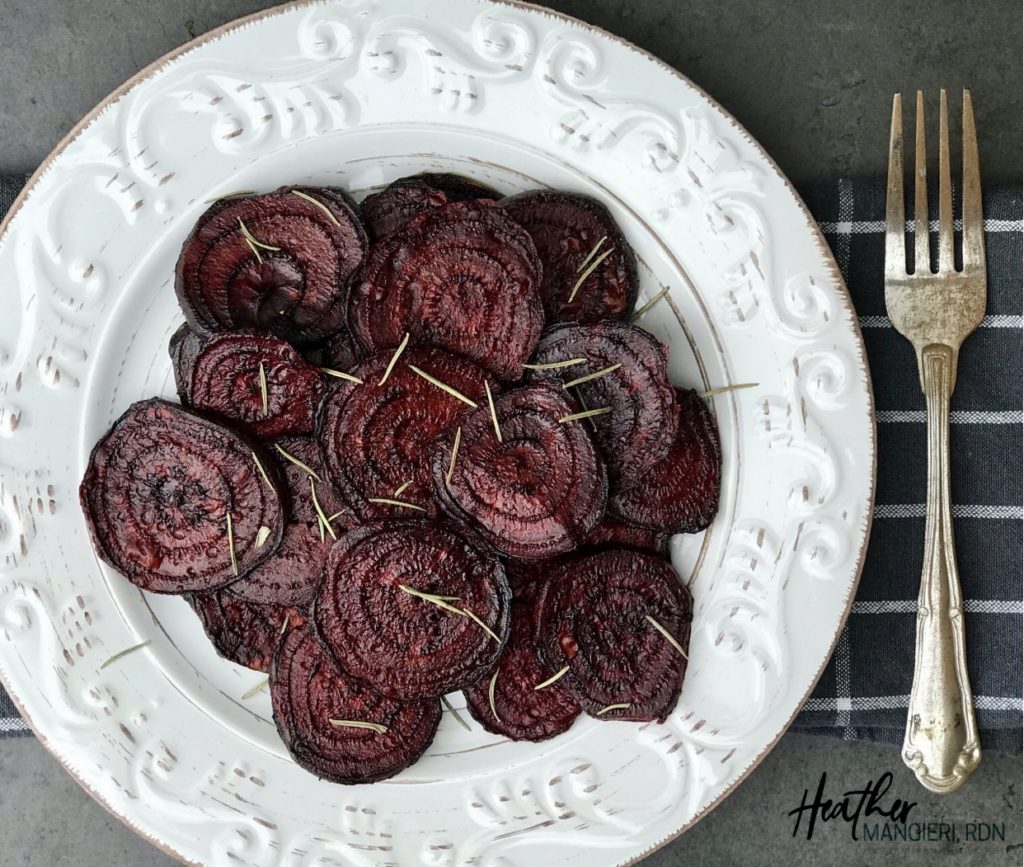
Roasting beets is one of the easiest and most delicious (in my opinion) ways to cook them. They can be prepared diced, or sliced, making a colorful side dish or on top of a salad. If you leave your roasted sliced beets in the oven for an extra 10 minutes, you have nutritious snack – beet chips.
All of us can benefit from the nutrition that beets provide. If you’re ready to get cooking, this recipe for sliced roasted beets is a great place to start. Give it a try and let me know what you think.
Do you have a favorite way to eat beets?

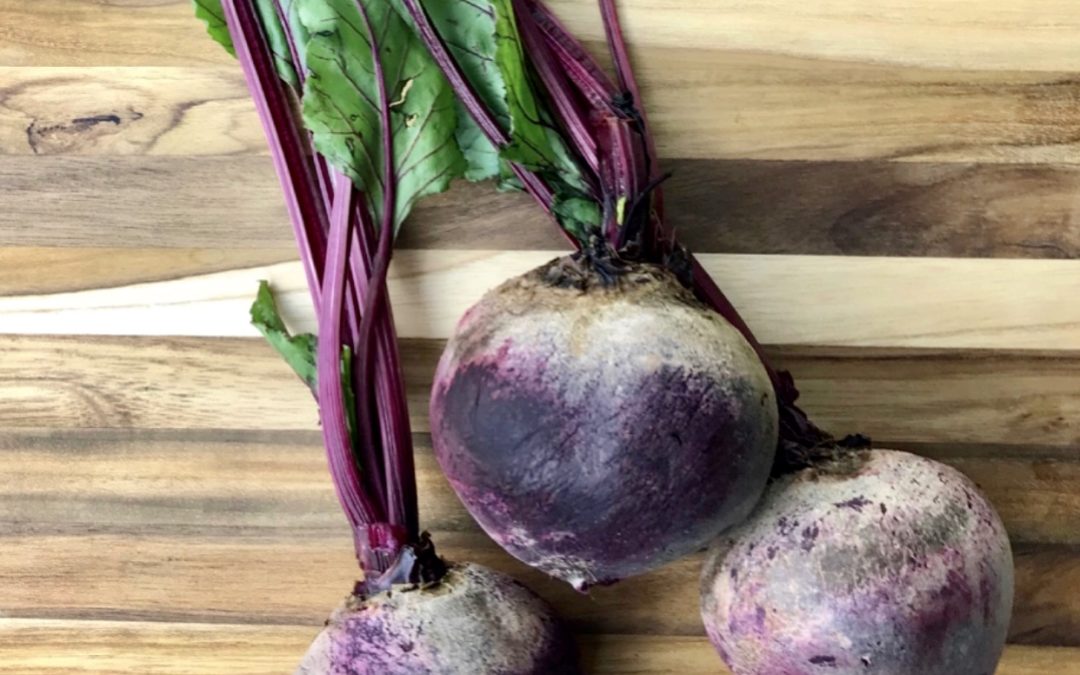
 Hi, I’m Heather – a registered dietitian, busy mom, consultant, adventure junkie and travel addict who has mastered living healthy on the go. My blog is where I share simple recipes and healthy living tips to help and inspire others to live their best life.
Hi, I’m Heather – a registered dietitian, busy mom, consultant, adventure junkie and travel addict who has mastered living healthy on the go. My blog is where I share simple recipes and healthy living tips to help and inspire others to live their best life.
Sadly though, the colour obtain from beetroot for dyeing with, is transient, it is what is referred to as a fugitive dye, and will fade quite quickly from vibrant pink to dull grey quite quickly, before disappearing all together.
Question;Why cooked beet and beet juice become slimy after few days in the refrigerator? a process of being fermenting?grace
I have the same issue.
Same
Can you still eat it safely?
yes, I think it’s from pectin? carrot juice will do the same thing if left for a day or two…I once had a carrot SOUP do that & thought it had spoiled, but it was just doing its thing! I think if I had heated it, maybe it would’ve loosened…someone suggested whirring slimy beet (carrot) juice in the blender. I have whisked my thick beet juice with orange and it broke it up; I suffered no ill consequences as it is NOT toxic/spoiled; just consider it a stage in fermentation.